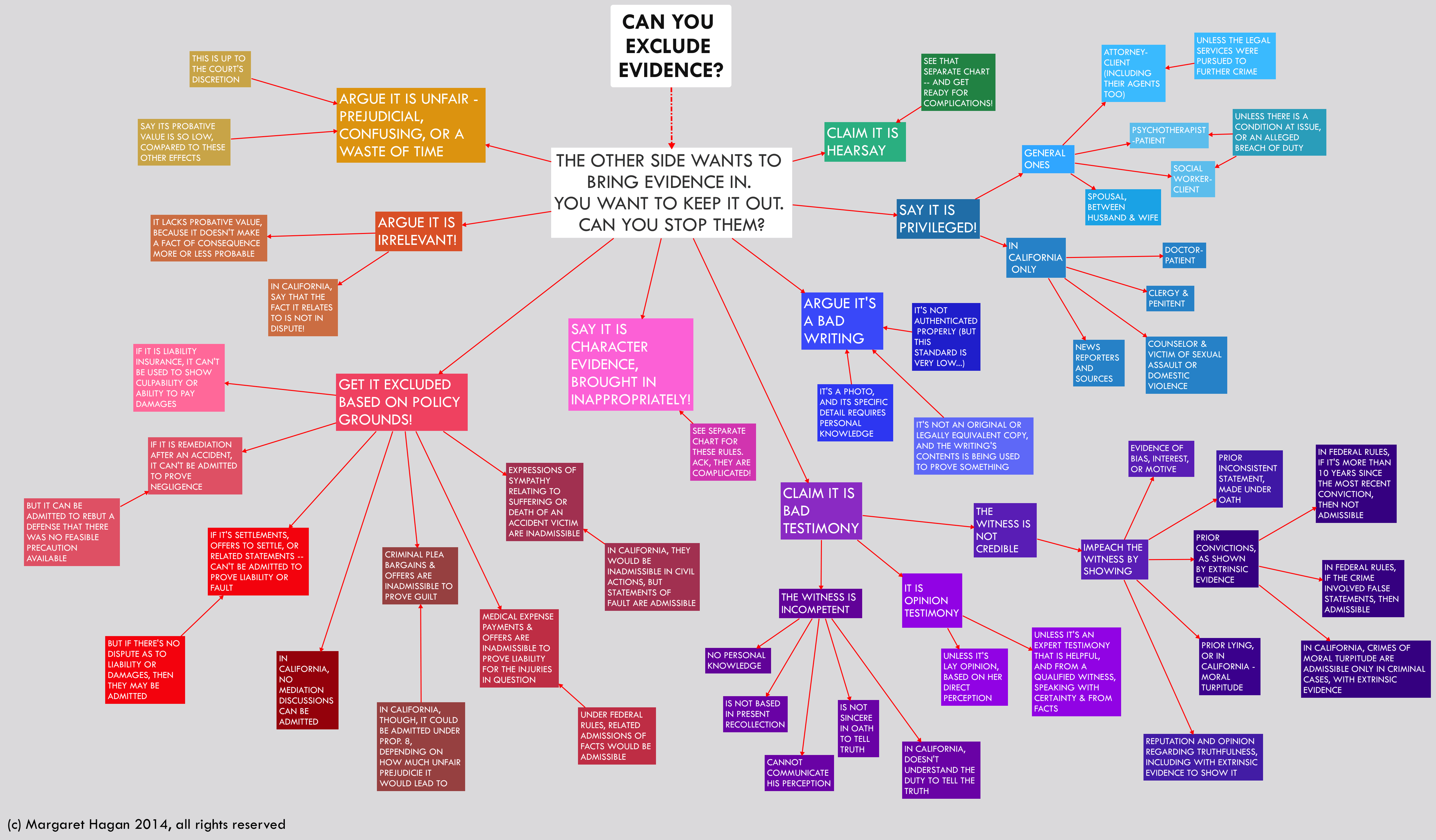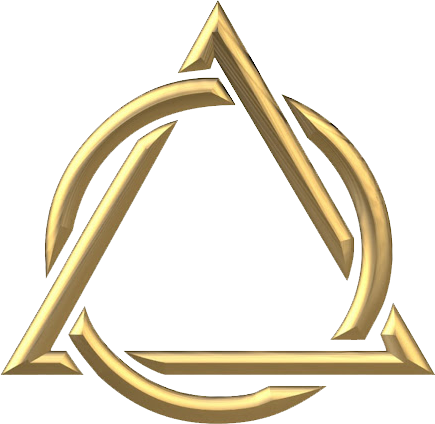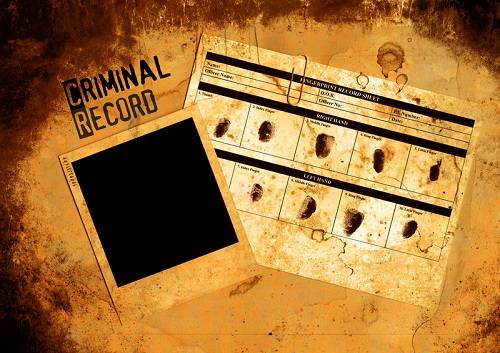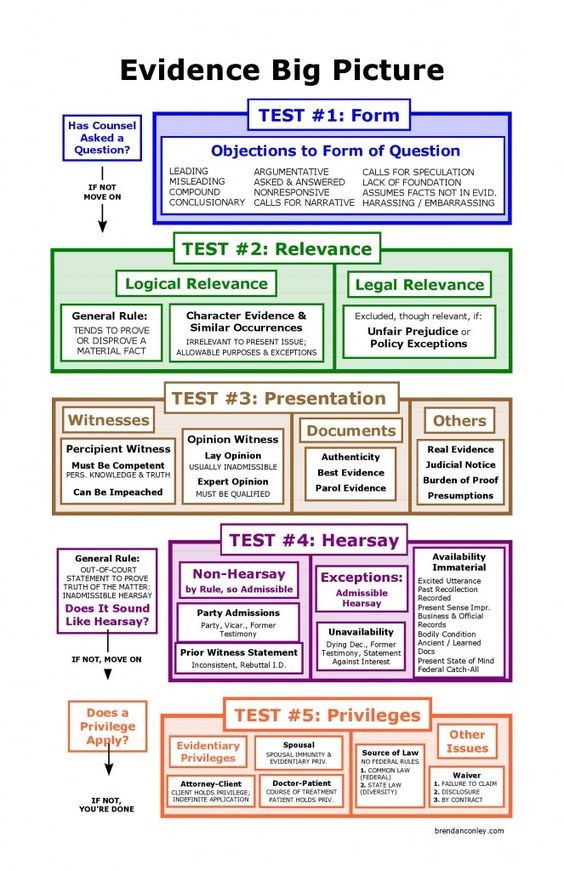Seal & Destroy a Criminal Record
Information on sealing and destroying an arrest record can be found at California penal code section 851.87 through 851.92. For purposes of PC 851 motions the defendant is referred to as the Petitioner. A petitioner’s request to seal and destroy an arrest record may be sought in several situations, including after the successful completion of a diversion program or after the defendant was arrested but not convicted of the crime for which he or she was arrested.
Diversion Related 851 Motion: Diversion is program whereby an accusatory pleading is placed on hold while the defendant completes terms of diversion. Terms of diversion are similar to probation terms and usually include an order to pay fines, stay out of trouble, complete classes, etc. If the terms of diversion are successfully completed the defendant’s criminal case is dismissed (diverted). Thereafter, the defendant may request that the court seal and destroy the defendant’s arrest and diversion sentence (PC 851.87 Abbrev.). More information on diversion programs may be found at Diversion.
Note: For arrest records that are sealed after the successful completion of diversion the defendant may state that he or she has not been arrested except in certain circumstance, including, but not limited to, a response to a direct question in an application to become a peace officer.
Employment: The petitioner may not have his or her criminal record that is sealed and destroyed after a diversion program used against him or her to deny employment (PC 851.87).
No Conviction after Arrest: Per PC 851.91(a) a person who is arrested but not convicted of a crime may petition the court to have his or her arrest related records sealed (PC 851.91 Abbrev.).
For purposes of PC 851.91 motions, an arrest does not result in a conviction if any of the following is true:
- The statute of limitations has run on every offense upon which the arrest is based;
- the prosecutor timely filed criminal charges, but the arrest did not lead to a conviction because the criminal charges were dismissed and may not be refiled, or
- because the defendant was acquitted of the criminal charges.
Exception: If the defendant intentionally evaded law enforcement efforts to prosecute the arrest then he or she may be denied the sealing and destruction of his or her criminal record. This is true even if the any of the above required condition would otherwise apply to the defendant’s 851 petition.
PC 851.91 After Appeal: If the defendant was found guilty at a criminal trial but his or her conviction was reversed on appeal and any of the condition above apply then the defendant may petition to have his or her arrest sealed pursuant to PC 851.91.
Limitations: A petition may have his or her criminal arrest and related records sealed and destroyed as a matter of right if the arrest is not based upon domestic violence with a pattern of domestic violence, child abuse with a pattern of child abuse, or elder abuse with a pattern of elder abuse, unless the court finds that granting the petition serves the best interest of justice.
Note: A pattern of abuse means “two or more convictions, or five or more arrests, for separate offenses occurring on separate occasions within three years from at least one of the other convictions or arrests.” (PC 851.91)
In determining whether the granting the 851.91 petition would be in the interest of justice (despite the fact that the defendant has a pattern of abuse prior to the current arrest) the court will consider the following: the hardship to the petitioner, the good conduct of the petitioner, the circumstances of the petitioner’s prior arrests, and more. In other words, if the petitioner is arrested for a crime, and that arrest never leads to a criminal conviction, then the petitioner may have his or her arrest sealed.
In Sum, If the arrest was for a crime that did not involve a pattern of abuse against a child, a person domestically related to the petitioner, or an elder, then the petitioner may have his or her arrest sealed as a matter of right; but, if the arrest did involve a crime for which the petitioner has a pattern of abuse against a child, a domestically related person, or an elder, then the defendant will be required to show that the sealing of his or her arrest record would be in the best interest of justice (PC 851.91).
Petition Procedure: PC 851 petitions start with the filing of a petition to seal and destroy arrest and related records with the proper court (the court that has jurisdiction over the matter where the arrest occurred). Copies of the petition must be served on the arresting law enforcement agency and on the prosecutor no less than fifteen days before the petition is heard in criminal court. Thereafter, the prosecuting attorney may file a response to the petition. The district attorney’s response may include police reports and other records in his or her efforts to show that the petition should not be granted the requested relief. If the district attorney objects at the initial hearing on the matter, the hearing will be continued at least sixty days so that the prosecuting attorney can prepare a more thorough response.
Note: In cases where the defendant has a right to the sealing and destruction of arrest and related records as a matter of right the district attorney is less likely to file a response to the petition (PC 851.91).
If the petition to seal and destroy an arrest and related records is granted, whether the request is made after the successful completion of diversion (PC 851.87) or pursuant to a PC 851.91 motion, the petitioner’s arrest and related records will be sealed and destroyed according to the following: The court will send a report to the Department of Justice, the prosecuting attorney, and the relevant law enforcement agency stating that the relief sought was granted. The report will indicate that the arrest is deemed not to have occurred and the petitioner may answer question relating to the sealed arrest that he or she has not been arrested for the offense; however, as stated, the arrest is not sealed and destroyed for all purposes.
For example, a prosecuting attorney may use an arrest record against the defendant in subsequent prosecution even if that arrest record was sealed and destroyed pursuant to PC 851.87 or 851.91. In addition, a sealed and destroyed arrest record may not be denied in response to any direct question contained in a questionnaire or application for public office, for employment as a peace officer, for licensing by any state or local agency, or for contracting with the CA State Lottery Commission.
Statistical Info Not Sealed: A sealing and destruction of an arrest record does not destroy the booking information related to that arrest. For example, the petitioner’s fingerprints, photographs, or DNA collected during the booking process remains in the records of the Department of Justice. Also, the destruction of an arrest record does not mean that an agency authorized to search the petitioner’s criminal history will not know the defendant was arrested; rather, the facts and circumstances of the arrest are sealed but petitioner’s criminal record may continue to reflect that an arrest was “sealed.”
Court Records Sealed: The records sealed means files, and materials created, compiled, or maintained by or for the court in relation to court proceedings, and includes, but is not limited to, indexes, registers of actions, court minutes, court orders, court filings, court exhibits, court progress and status reports, court history summaries, copies of state summary criminal history information and local summary criminal history information, and any other criminal history information contained in any of those materials (PC 851.92 Abbrev.).
How to Seal & Destroy Arrest Records in California
If you were arrested for a crime but never convicted, California law allows you to get your arrest records sealed and destroyed as a matter of right. Sealing a record means that it will not show up on most criminal background checks. Records of arrest will be destroyed, including
- police reports,
- fingerprints,
- booking photos, and
- rap sheet entries.
The process to seal a record involves three key steps:
- You must first file a petition in the city or county where the arrest took place.
- The petition must be served on the local prosecuting agency and the police agency that made the arrest.
- Then a hearing takes place where a judge decides whether to grant or deny the petition.
A criminal defense attorney can handle the entire process for you.
The current law as to sealing originated as California Senate Bill 393, which then-Governor Jerry Brown signed into law on October 11, 2017. Called the Consumer Arrest Record Equity Act (CARE Act), SB 393 is now codified in Penal Code 851.87 PC. This section allows you to have your record of the arrest sealed as a matter of right when:
- No criminal charges were ever filed,
- Criminal charges were filed but later dismissed,
- You were found “not guilty” (acquitted) in a jury trial,
- Your conviction was vacated or overturned on appeal, or
- You successfully completed a pretrial diversion or pre-sentencing program, such as Penal Code 1000 deferred entry of judgment. 1
An exception to sealing an arrest record as a matter of right is when you have a history of arrests and/or convictions for:
- Domestic violence,
- Child abuse, and/or
- Elder abuse.
As of July 1, 2023 with the passage of Senate Bill 731 – The Clean Slate Act, most people’s arrest and conviction records will get automatically cleared from their criminal record through a process called “automatic relief“:
- Misdemeanor arrests should be sealed after 1 year if there are no charges, and felony arrests should be sealed after 3 years if there are no charges.
- Cases that get dismissed should be cleared immediately.
- Convictions of cases where you are granted probation should be cleared once the case closes.
- Otherwise, misdemeanors convictions will be cleared 1 year after the case ends, while felony convictions will be cleared 4 years after the case ends. (This does not apply to serious, violent, or sex offender felonies.)
1. What are the benefits of sealing an arrest record?
Criminal records are public records. This means that anyone can access another person’s criminal history.
Prospective employers, apartment owners, state licensing agencies, insurance companies — even potential dating partners — can run a background check and see someone’s criminal history. Such people may not care whether an arrest was justified or resulted in a conviction.
California’s “ban the box” law (codified in AB 1008) prohibits employers from considering a job applicant’s arrests that did not ultimately lead to a conviction. Again, however, employers may dismiss some job candidates because of their arrest records without ever stating this.
But once an arrest record is sealed under PC 851.87, members of the public will no longer be able to see it. The arrest record, police investigative reports, photos, fingerprints and court records will be inaccessible except for limited use by the state of California or criminal justice agencies. In short, a record seal gives the defendant a fresh start.
2. What is California’s Clean Slate Law / SB-731?
In full effect as of July 1, 2023, California’s Clean Slate Law (SB-731) automatically clears most arrest and conviction records from your criminal history after certain conditions or waiting periods are met.
| Your California criminal record | When your record is eligible for automatic relief (in most cases) |
| Misdemeanor arrest with no charges brought | 1 year after the arrest |
| Misdemeanor charge which gets dismissed | Immediately after the dismissal |
| Misdemeanor conviction where you are granted probation | Immediately after probation is done |
| Misdemeanor conviction where you are not granted probation | 1 year after case closes |
| Felony arrest with no charges brought | 3 years after the arrest |
| Felony charge which gets dismissed | Immediately after the dismissal |
| Felony conviction where you are granted probation (not including serious, violent, or sex offender crimes) | Immediately after probation is done |
| Felony conviction where you are not granted probation (not including serious, violent, or sex offender crimes) | 4 years after case closes |
The Clean Slate Act takes the burden off you to file a motion to seal or expunge your record. Plus for the first time, it allows for automatic relief of felony convictions where you may have been incarcerated – thereby greatly increasing the employment and housing prospects for countless people.2
Note that the automatic record relief process may get delayed if you pick up new criminal cases in the interim. Plus if your criminal record is never eligible for automatic relief, you still may be able to get relief by filing a petition to seal or expunge.
Also note that automatic relief does not restore firearm rights.
3. Who is eligible to seal an arrest?
Penal Code 851.87 gives people the right to have an arrest record sealed as long as their arrest did not result in a conviction. For purposes of PC 851.87, an arrest did not result in a conviction if any of the following apply:
- No charges were filed and the statute of limitations on each possible felony, misdemeanor, or infraction charge has expired;3
- Charges were filed but they were later dismissed and cannot be refiled (for example, as the result of a Penal Code 995 motion);4
- Charges were filed but the defendant was acquitted (found “not guilty”) at trial;
- The defendant was convicted, but the conviction was vacated or reversed on appeal and the charge(s) may not be refiled; or
- Charges were dismissed after the defendant successfully completed a pretrial or pre-sentencing program such as drug diversion.5
Note that as of July of 2022, California has been automatically sealing misdemeanor records of people who have stayed out of trouble for one year. Then as of July of 2023, California is automatically sealing most felony records of people who have stayed out of trouble for four years.
However, this automatic record sealing process excludes people convicted of serious or violent felonies. These people would still need to formally petition for a record seal. Plus, sex offenders generally cannot get a record seal.6
how to expunge a conviction under California Penal Code 1203.4 PC. Expunging is a more difficult process since the defendant has pleaded guilty or “no contest” to, or been convicted of, a crime.

The key is that there was no conviction and no exceptions apply.
4. What does it mean to seal an arrest “as a matter of right”?
Under the old law (Penal Code 851.8 PC) the person who was arrested had the burden of proving that he or she was “factually innocent.”
SB 393 / PC 851.87 shifts the burden of proof to the prosecutor to prove that someone is not entitled to seal their record — for instance due to a pattern of domestic violence or because charges can still be filed.
Almost everyone else is entitled to have their arrest records sealed as a matter of right (automatically). The key is that the arrest did not result in a conviction and no exceptions apply.
5. Who is NOT eligible to have an arrest record destroyed in California?
A person is not eligible to have an arrest record sealed if any of the following apply:
- He or she may still be charged with any of the offenses upon which the arrest was based;7
- The arrest was for murder or another crime for which there is no statute of limitations (unless the person was acquitted or found factually innocent of the charge);8
- The person was not charged because he or she intentionally evaded law enforcement efforts to prosecute the arrest, such as by absconding from the jurisdiction;9
- The person evaded efforts to prosecute the arrest by engaging in identity fraud and was subsequently charged with a crime for that act of identity fraud.10
6. What counts as a “pattern” of domestic violence or abuse?
People are not entitled to seal a California arrest as a matter of right if their criminal record shows a “pattern” of:
- Domestic violence,
- Child abuse, or
- Elder abuse.
Under SB 393 and California Penal Code 851.91 a “pattern” is defined as two or more convictions, or five or more arrests, within a three-year period.11
However, people who fall into this category can still petition to have their records sealed on the grounds that doing so would “serve the interests of justice.”
In determining whether the interests of justice would be served by sealing an arrest, the judge may consider any relevant factors, including (but not limited to):
- Hardship to the petitioner caused by the arrest that is the subject of the petition;
- Declarations or evidence regarding the petitioner’s good character;
- Declarations or evidence regarding the arrest; or
- The petitioner’s record of convictions.
7. When can a sealed arrest record be legally used in California?
Although sealing a record effectively destroys it for most purposes, it does not entirely cease to exist.
The sealed arrest may be pleaded and proved if the petitioner is subsequently prosecuted for any other offense.12
Additionally, a criminal justice agency may, in the regular course of its duties, access and disclose the arrest to other law enforcement agencies to the same extent as if it had not been sealed.13
Sealing also does not relieve the petitioner from:
- Any existing duty to register as a sex offender pursuant to California Penal Code 290 PC;
- Any legal prohibition against holding public office that may result from the arrest;14
- Any prohibition against owning or possessing a firearm or susceptibility to a conviction for violating California’s “felon with a firearm” law;15 or
- The obligation to disclose the arrest as otherwise required by law in response to a direct question on an application for:
- Public office,
- Employment as a peace officer,
- Licensing by any state or local agency, or
- A contract with the California State Lottery Commission.16
Finally, it should be noted that sealing an arrest applies solely to the specific arrest being contested. It does not erase one’s entire criminal record. People must submit a separate petition for each arrest on their record that did not result in a conviction.
8. Is there a deadline for moving to seal my California arrest record?
Under prior California Penal Code 851.8 people had just two years from the later of their arrest or the filing of charges to petition to seal their arrest record. Penal Code 851.87 contains no time limit for petitioning.
However, the new law has not yet been tested in court.
Accordingly, we recommend filing a petition to seal an arrest as soon as it is no longer possible for the prosecutor to file or refile charges.
An experienced California criminal lawyer can help you determine when you have eligibility to file for relief.
9. What is the process?
Note that the record seal process is automatic for most
- misdemeanors (if you stayed out of trouble for one year) and
- non-serious and non-violent felonies (if you stayed out of trouble for four years).17
9.1. Filing the petition with the court
A petition to seal an arrest record in California must be filed either:
- In the superior court in which charges based on the arrest were filed or,
- If charges were not filed, in the city or county in which the arrest occurred.
The petition must then be legally served on both:
- The prosecuting attorney of the city or county in which the arrest occurred, and
- The law enforcement agency that made the arrest.18
Penal Code 851.91 requires the following information to be provided with the petition to seal the arrest record:
- The petitioner’s name and date of birth.
- The date of the arrest for which sealing is sought.
- The city and county where the arrest took place.
- The name of the law enforcement agency that made the arrest.
- Any other information identifying the arrest, such as a case or court number.
- The alleged offenses upon which the arrest was based or charges were filed.
- A statement that the petitioner is entitled to have his or her arrest sealed either as a matter of right or in the interests of justice, as applicable.
- If the petition is based on the interests of justice, a statement of how those interests would be served by granting the petition and declarations in support.19
9.2 The hearing
If the District Attorney contests the petition the court will schedule a hearing.
The county in which you live will determine whether you must personally appear in court for the proceedings or whether your criminal defense attorney can appear on your behalf.
At the hearing the judge will examine the arrest record and, if necessary, evidence of why sealing is in the interests of justice.
Because the judge has so much discretion in deciding whether to grant or deny your motion to seal and destroy your California arrest records — and because the judge can deny your motion with prejudice so that you may not re-file your request — it is critical to hire a skilled California criminal defense attorney.
A responsible attorney will thoroughly research your court case and make sure all paperwork is done correctly the first time to ensure that no time is lost due to incomplete or inadequate forms. S/he will also conduct the PC 851.87 hearing and argue your case to the judge.
10. How long does it take?
If your criminal record is eligible for an automatic seal pursuant to the Clean Slate Act, your record should be cleared within a month. Otherwise, it typically takes about ninety (90) days after filing a petition to get a court order to seal an arrest record in California.
Within 30 days of the court’s issuance of the order to seal an arrest record, the court will notify:
- The law enforcement agency or agencies that made or participated in the arrest,
- The law enforcement agency that administers the master criminal history records, and
- The California Department of Justice.
The petitioner’s master criminal record and court record will then be updated to note that the arrest has been sealed. The file will be stamped that the record may not be released outside the criminal justice sector.
The responsible local law enforcement agency will ensure that this information is included in all master copies, digital or otherwise, of the police investigative report related to the arrest that was sealed.
Arrest records, police officer investigative reports, and court records that are sealed under this section shall not be disclosed to any person or entity except:
- The person whose arrest was sealed, or
- A criminal justice agency (which may use the information to the same extent as if the arrest had not been sealed).20
11. What remedy do I have if a sealed arrest record is released?
Improper dissemination of a sealed arrest can be punished by a civil penalty of between $500 and $2,500 per violation. The penalty may be enforced by a city attorney, district attorney, or the Attorney General.
The person affected may also have the right to bring a lawsuit for compensatory damages or possibly even punitive damages (if the release was reckless or intentional).
Our California personal injury lawyers offer free consultations to people who have suffered damages as a result of their arrest record being unlawfully released.
12. What is the difference between sealing arrest records and sealing juvenile records?
Sealing and destroying an adult arrest record under PC 851.87 is a completely different process from sealing a juvenile record. You are eligible to seal your California juvenile criminal record if
- You are currently an adult, or the jurisdiction of the juvenile court terminated at least five years ago,
- As an adult, you have not been convicted of any crimes involving moral turpitude (that is, crimes that involve dishonesty or immoral behavior), and
- There is no pending civil litigation based on the juvenile incident.21
To Learn More…. Read MORE Below and click the links Below
Abuse & Neglect – The Mandated Reporters (Police, D.A & Medical & the Bad Actors)
Mandated Reporter Laws – Nurses, District Attorney’s, and Police should listen up
If You Would Like to Learn More About: The California Mandated Reporting LawClick Here
To Read the Penal Code § 11164-11166 – Child Abuse or Neglect Reporting Act – California Penal Code 11164-11166Article 2.5. (CANRA) Click Here
Mandated Reporter formMandated ReporterFORM SS 8572.pdf – The Child Abuse
ALL POLICE CHIEFS, SHERIFFS AND COUNTY WELFARE DEPARTMENTS INFO BULLETIN:
Click Here Officers and DA’s for (Procedure to Follow)
It Only Takes a Minute to Make a Difference in the Life of a Child learn more below
You can learn more here California Child Abuse and Neglect Reporting Law its a PDF file
Learn More About True Threats Here below….
We also have the The Brandenburg v. Ohio (1969) – 1st Amendment
CURRENT TEST = We also have the The ‘Brandenburg test’ for incitement to violence – 1st Amendment
We also have the The Incitement to Imminent Lawless Action Test– 1st Amendment
We also have the True Threats – Virginia v. Black is most comprehensive Supreme Court definition – 1st Amendment
We also have the Watts v. United States – True Threat Test – 1st Amendment
We also have the Clear and Present Danger Test – 1st Amendment
We also have the Gravity of the Evil Test – 1st Amendment
We also have the Elonis v. United States (2015) – Threats – 1st Amendment
Learn More About What is Obscene…. be careful about education it may enlighten you
We also have the Miller v. California – 3 Prong Obscenity Test (Miller Test) – 1st Amendment
We also have the Obscenity and Pornography – 1st Amendment
Learn More About Police, The Government Officials and You….
$$ Retaliatory Arrests and Prosecution $$
Anti-SLAPP Law in California
Freedom of Assembly – Peaceful Assembly – 1st Amendment Right
We also have the Brayshaw v. City of Tallahassee – 1st Amendment – Posting Police Address
We also have the Publius v. Boyer-Vine –1st Amendment – Posting Police Address
We also have the Lozman v. City of Riviera Beach, Florida (2018) – 1st Amendment – Retaliatory Police Arrests
We also have the Nieves v. Bartlett (2019) – 1st Amendment – Retaliatory Police Arrests
We also have the Hartman v. Moore (2006) – 1st Amendment – Retaliatory Police Arrests
Retaliatory Prosecution Claims Against Government Officials – 1st Amendment
We also have the Reichle v. Howards (2012) – 1st Amendment – Retaliatory Police Arrests
Retaliatory Prosecution Claims Against Government Officials – 1st Amendment
Freedom of the Press – Flyers, Newspaper, Leaflets, Peaceful Assembly – 1$t Amendment – Learn More Here
Vermont’s Top Court Weighs: Are KKK Fliers – 1st Amendment Protected Speech
We also have the Insulting letters to politician’s home are constitutionally protected, unless they are ‘true threats’ – Letters to Politicians Homes – 1st Amendment
We also have the First Amendment Encyclopedia very comprehensive – 1st Amendment
Dwayne Furlow v. Jon Belmar – Police Warrant – Immunity Fail – 4th, 5th, & 14th Amendment
ARE PEOPLE LYING ON YOU? CAN YOU PROVE IT? IF YES…. THEN YOU ARE IN LUCK!
Penal Code 118 PC – California Penalty of “Perjury” Law
Federal Perjury – Definition by Law
Penal Code 132 PC – Offering False Evidence
Penal Code 134 PC – Preparing False Evidence
Penal Code 118.1 PC – Police Officer$ Filing False Report$
Spencer v. Peters– Police Fabrication of Evidence – 14th Amendment
Penal Code 148.5 PC – Making a False Police Report in California
Penal Code 115 PC – Filing a False Document in California
Sanctions and Attorney Fee Recovery for Bad Actors
FAM § 3027.1 – Attorney’s Fees and Sanctions For False Child Abuse Allegations – Family Code 3027.1 – Click Here
FAM § 271 – Awarding Attorney Fees– Family Code 271 Family Court Sanction Click Here
Awarding Discovery Based Sanctions in Family Law Cases – Click Here
FAM § 2030 – Bringing Fairness & Fee Recovery – Click Here
Zamos v. Stroud – District Attorney Liable for Bad Faith Action – Click Here
Mi$Conduct – Pro$ecutorial Mi$Conduct
Prosecutor$
Criminal Motions § 1:9 – Motion for Recusal of Prosecutor
Pen. Code, § 1424 – Recusal of Prosecutor
Removing Corrupt Judges, Prosecutors, Jurors and other Individuals & Fake Evidence from Your Case
Mi$Conduct – Judicial Mi$Conduct
Judge$
Prosecution Of Judges For Corrupt Practice$
Code of Conduct for United States Judge$
Disqualification of a Judge for Prejudice
Judicial Immunity from Civil and Criminal Liability
Recusal of Judge – CCP § 170.1 – Removal a Judge – How to Remove a Judge
l292 Disqualification of Judicial Officer – C.C.P. 170.6 Form
How to File a Complaint Against a Judge in California?
Commission on Judicial Performance – Judge Complaint Online Form
Why Judges, District Attorneys or Attorneys Must Sometimes Recuse Themselves
Removing Corrupt Judges, Prosecutors, Jurors and other Individuals & Fake Evidence from Your Case
Misconduct by Government Know Your Rights Click Here (must read!)
Under 42 U.S.C. $ection 1983 – Recoverable Damage$
42 U.S. Code § 1983 – Civil Action for Deprivation of Right$
18 U.S. Code § 242 – Deprivation of Right$ Under Color of Law
18 U.S. Code § 241 – Conspiracy against Right$
Section 1983 Lawsuit – How to Bring a Civil Rights Claim
What is Tort?
Suing for Misconduct – Know More of Your Right$
Police Misconduct in California – How to Bring a Lawsuit
How to File a complaint of Police Misconduct? (Tort Claim Forms here as well)
Deprivation of Rights – Under Color of the Law
Malicious Prosecution / Prosecutorial Misconduct – Know What it is!
New Supreme Court Ruling – makes it easier to sue police
Possible courses of action Prosecutorial Misconduct
Misconduct by Judges & Prosecutor – Rules of Professional Conduct
Functions and Duties of the Prosecutor – Prosecution Conduct
What is Sua Sponte and How is it Used in a California Court?
Removing Corrupt Judges, Prosecutors, Jurors
and other Individuals & Fake Evidence from Your Case
Anti-SLAPP Law in California
Freedom of Assembly – Peaceful Assembly – 1st Amendment Right
How to Recover “Punitive Damages” in a California Personal Injury Case
Pro Se Forms and Forms Information(Tort Claim Forms here as well)
PARENT CASE LAW
RELATIONSHIP WITH YOUR CHILDREN &
YOUR CONSTITUIONAL RIGHT$ + RULING$
YOU CANNOT GET BACK TIME BUT YOU CAN HIT THOSE IMMORAL NON CIVIC MINDED PUNKS WHERE THEY WILL FEEL YOU = THEIR BANK
Family Law Appeal – Learn about appealing a Family Court Decision Here
9.3 Section 1983 Claim Against Defendant as (Individuals) —
14th Amendment this CODE PROTECT$ all US CITIZEN$
Amdt5.4.5.6.2 – Parental and Children’s Rights –
5th Amendment this CODE PROTECT$ all US CITIZEN$
9.32 – Interference with Parent / Child Relationship –
14th Amendment this CODE PROTECT$ all US CITIZEN$
California Civil Code Section 52.1
Interference with exercise or enjoyment of individual rights
Parent’s Rights & Children’s Bill of Rights
SCOTUS RULINGS FOR YOUR PARENT RIGHTS
SEARCH of our site for all articles relating for PARENTS RIGHTS Help!
Child’s Best Interest in Custody Cases
Are You From Out of State (California)? FL-105 GC-120(A)
Declaration Under Uniform Child Custody Jurisdiction and Enforcement Act (UCCJEA)
Learn More:Family Law Appeal
Necessity Defense in Criminal Cases
GRANDPARENT CASE LAW
Do Grandparents Have Visitation Rights? If there is an Established Relationship then Yes
Third “PRESUMED PARENT” Family Code 7612(C) – Requires Established Relationship Required
Cal State Bar PDF to read about Three Parent Law –
The State Bar of California family law news issue4 2017 vol. 39, no. 4.pdf
Distinguishing Request for Custody from Request for Visitation
Troxel v. Granville, 530 U.S. 57 (2000) – Grandparents – 14th Amendment
S.F. Human Servs. Agency v. Christine C. (In re Caden C.)
9.32 Particular Rights – Fourteenth Amendment – Interference with Parent / Child Relationship
Child’s Best Interest in Custody Cases
When is a Joinder in a Family Law Case Appropriate? – Reason for Joinder
Joinder In Family Law Cases – CRC Rule 5.24
GrandParents Rights To Visit
Family Law Packet OC Resource Center
Family Law Packet SB Resource Center
Motion to vacate an adverse judgment
Mandatory Joinder vs Permissive Joinder – Compulsory vs Dismissive Joinder
When is a Joinder in a Family Law Case Appropriate?
Kyle O. v. Donald R. (2000) 85 Cal.App.4th 848
Punsly v. Ho (2001) 87 Cal.App.4th 1099
Zauseta v. Zauseta (2002) 102 Cal.App.4th 1242
S.F. Human Servs. Agency v. Christine C. (In re Caden C.)
DUE PROCESS READS>>>>>>
Due Process vs Substantive Due Process learn more HERE
Understanding Due Process – This clause caused over 200 overturns in just DNA alone Click Here
Mathews v. Eldridge – Due Process – 5th & 14th Amendment Mathews Test – 3 Part Test– Amdt5.4.5.4.2 Mathews Test
“Unfriending” Evidence – 5th Amendment
At the Intersection of Technology and Law
We also have the Introducing TEXT & EMAIL Digital Evidence in California Courts – 1st Amendment
so if you are interested in learning about Introducing Digital Evidence in California State Courts
click here for SCOTUS rulings
Retrieving Evidence / Internal Investigation Case
Conviction Integrity Unit (“CIU”) of the Orange County District Attorney OCDA – Click Here
Fighting Discovery Abuse in Litigation – Forensic & Investigative Accounting – Click Here
Orange County Data, BodyCam, Police Report, Incident Reports,
and all other available known requests for data below:
APPLICATION TO EXAMINE LOCAL ARREST RECORD UNDER CPC 13321 Click Here
Learn About Policy 814: Discovery Requests OCDA Office – Click Here
Request for Proof In-Custody Form Click Here
Request for Clearance Letter Form Click Here
Application to Obtain Copy of State Summary of Criminal HistoryForm Click Here
Request Authorization Form Release of Case Information – Click Here
Texts / Emails AS EVIDENCE: Authenticating Texts for California Courts
Can I Use Text Messages in My California Divorce?
Two-Steps And Voila: How To Authenticate Text Messages
How Your Texts Can Be Used As Evidence?
California Supreme Court Rules:
Text Messages Sent on Private Government Employees Lines
Subject to Open Records Requests
case law: City of San Jose v. Superior Court – Releasing Private Text/Phone Records of Government Employees
Public Records Practices After the San Jose Decision
The Decision Briefing Merits After the San Jose Decision
CPRA Public Records Act Data Request – Click Here
Here is the Public Records Service Act Portal for all of CALIFORNIA Click Here
Rules of Admissibility – Evidence Admissibility
Confrontation Clause – Sixth Amendment
Exceptions To The Hearsay Rule – Confronting Evidence
Prosecutor’s Obligation to Disclose Exculpatory Evidence
Successful Brady/Napue Cases – Suppression of Evidence
Cases Remanded or Hearing Granted Based on Brady/Napue Claims
Unsuccessful But Instructive Brady/Napue Cases
ABA – Functions and Duties of the Prosecutor – Prosecution Conduct
Frivolous, Meritless or Malicious Prosecution – fiduciary duty
Appealing/Contesting Case/Order/Judgment/Charge/ Suppressing Evidence
First Things First: What Can Be Appealed and What it Takes to Get Started – Click Here
Options to Appealing– Fighting A Judgment Without Filing An Appeal Settlement Or Mediation
Cal. Code Civ. Proc. § 1008 Motion to Reconsider
Penal Code 1385 – Dismissal of the Action for Want of Prosecution or Otherwise
Penal Code 1538.5 – Motion To Suppress Evidence in a California Criminal Case
CACI No. 1501 – Wrongful Use of Civil Proceedings
Penal Code “995 Motions” in California – Motion to Dismiss
WIC § 700.1 – If Court Grants Motion to Suppress as Evidence
Suppression Of Exculpatory Evidence / Presentation Of False Or Misleading Evidence – Click Here
Notice of Appeal — Felony (Defendant) (CR-120) 1237, 1237.5, 1538.5(m) – Click Here
California Motions in Limine – What is a Motion in Limine?
Cleaning Up Your Record
Penal Code 851.8 PC – Certificate of Factual Innocence in California
Petition to Seal and Destroy Adult Arrest Records – Download the PC 851.8 BCIA 8270 Form Here
SB 393: The Consumer Arrest Record Equity Act – 851.87 – 851.92 & 1000.4 – 11105 – CARE ACT
Expungement California – How to Clear Criminal Records Under Penal Code 1203.4 PC
How to Vacate a Criminal Conviction in California – Penal Code 1473.7 PC
Seal & Destroy a Criminal Record
Cleaning Up Your Criminal Record in California (focus OC County)
Governor Pardons – What Does A Governor’s Pardon Do
How to Get a Sentence Commuted (Executive Clemency) in California
How to Reduce a Felony to a Misdemeanor – Penal Code 17b PC Motion
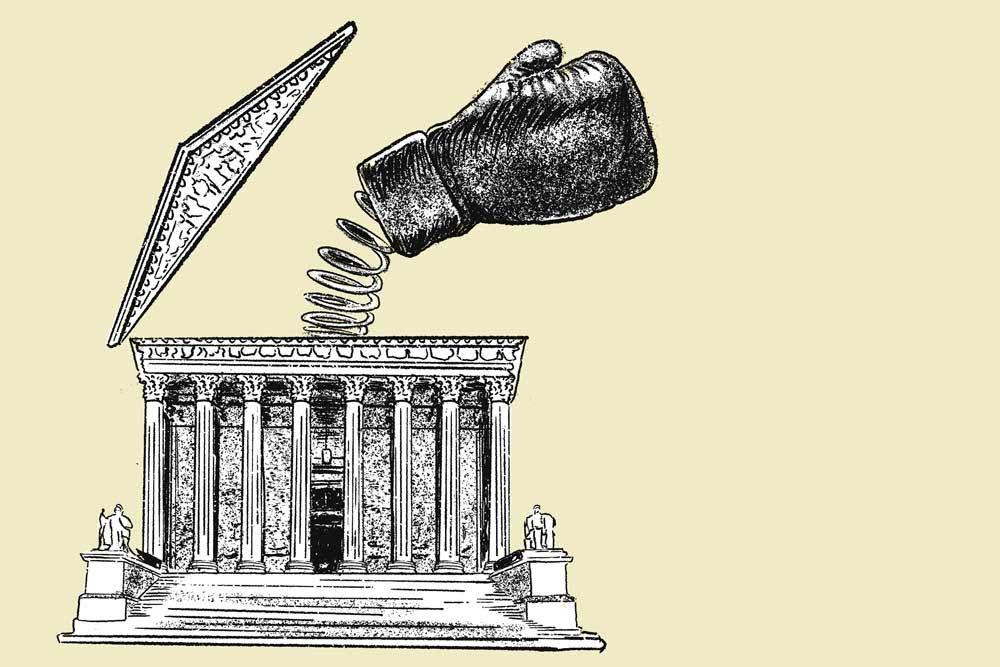 Epic Criminal / Civil Right$ SCOTUS Help – Click Here
Epic Criminal / Civil Right$ SCOTUS Help – Click Here
 Epic Parents SCOTUS Ruling – Parental Right$ Help – Click Here
Epic Parents SCOTUS Ruling – Parental Right$ Help – Click Here
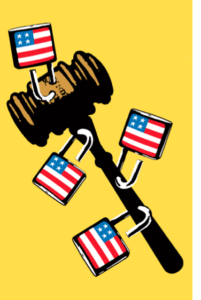 Judge’s & Prosecutor’s Jurisdiction– SCOTUS RULINGS on
Judge’s & Prosecutor’s Jurisdiction– SCOTUS RULINGS on
 Prosecutional Misconduct – SCOTUS Rulings re: Prosecutors
Prosecutional Misconduct – SCOTUS Rulings re: Prosecutors
Family Treatment Court Best Practice Standards
Download Here this Recommended Citation
Please take time to learn new UPCOMING
The PROPOSED Parental Rights Amendment
to the US CONSTITUTION Click Here to visit their site
The proposed Parental Rights Amendment will specifically add parental rights in the text of the U.S. Constitution, protecting these rights for both current and future generations.
The Parental Rights Amendment is currently in the U.S. Senate, and is being introduced in the U.S. House.

